Retro Review: A Hitchhiker’s Guide to Edmond Hamilton’s Galaxy
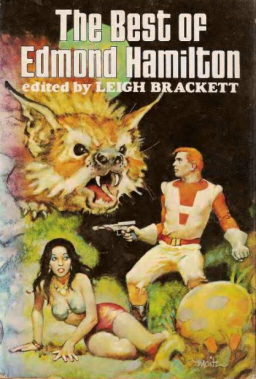
He remembered his father, the Valkar of years ago, teaching him from a great star-chart on the wall of the ruined palace.
“The yellow sun that neighbors the triple-star just beyond the last rim of the Darkness only to be approached from zenith or the drift will riddle you –”
Yes, as an escape from the current sadness-of-the-canines, I’ve been reading Edmond Hamilton. Ironic really, since Hamilton’s an author with rockets on the cover, square jawed heroes within, and solutions worked out through — mostly — superior guts backed up by awesome Harrington-grade firepower.
Actually, Hamilton’s politics evolved with the century.
His early books are all about paternalistic bureaucracies and mighty empires. His later books are more questioning, with bureaucrats as antagonists, and Imperialism something one might sensibly turn one’s back on.
(I’m torn here, because I want to say more, cite examples, but I don’t want to spoiler the books for you. If you like vintage SF, and haven’t read Hamilton, then you’re in for a treat. Imagine if EE Doc Smith could actually write. )
All that said, reading Hamilton for politics is like listening to Hendrix for theme and variation — it’s there if you insist on looking for it, but the visceral impact is much greater.
I think of Edmond Hamilton as Hubble Telescope fanfiction.
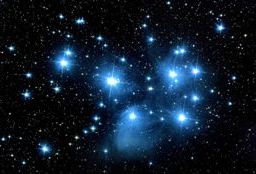
Finally the cruisers decelerated. Orion Nebula was now a glow in the starry heavens far behind them. Close ahead lay the shining cluster of suns of the Pleiades. And near the Pleiades’ famous beacon group there stretched a far-flung echelon of tiny sparks. The sparks were ships. Warships of the Mid-Galactic Empire’s great navy cruising here off the Pleiades, one of the many mighty squadrons watching and warding the Empire’s boundaries.
Yes, throughout his books, the science of space travel is not only dodgy, it’s hand-wavy. However, whether in the 1930s or 1960s. the science of space itself seems mostly up-to-date.
Hamilton wants to lean out of the window and look at the passing red giant, before weaving through a dust cloud — he always calls them “drift” — and plunging at 5C towards an ancient solar system, the hyperspace radar showing a massive fleet several light years to starboard. It’s all a bit like Cosmos: A Spacetime Odyssey but with space battles.
Space is big. Really big. You just won’t believe how vastly, hugely, mind-bogglingly big it is. I mean, you may think it’s a long way down the road to the chemist’s, but that’s just peanuts to space.
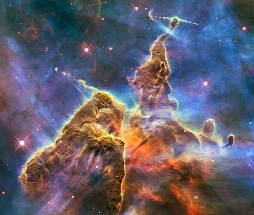
That’s what you get from Hamilton, but without the laugh track.
Hamilton and Lovecraft were a half generation apart (born 1904 versus 1890), but I think their imaginations both resulted from the same intellectual Big Bang.
As Charles Stross put it:
…the universe H. P. Lovecraft was born into consisted of a single galaxy containing about a million stars, and our own star was less than 100 million years old….The universe Lovecraft died in was very different…vastly larger… with over a hundred million stars in our own galaxy, and many tens or hundreds of millions of other galaxies estimated, and the upper limit on the sun’s age raised to five billion years, the universe had expanded by two orders of magnitude in age and nine orders of magnitude in size (as measured by the number of stars) during Lovecraft’s life. That’s eleven orders of magnitude in just over four decades.
Whereas Lovecraft saw the wider universe, blinked, then succumbed to Cosmic Horror (cosmic agoraphobia, cosmic xenophobia, cosmic paranoia…), Hamilton dived right in and revelled in the wild sea of stars, a happy literary porpoise riding Astronomy’s bow wave.
The effect is odd but pleasing, because in other ways his books are always “of their time”.
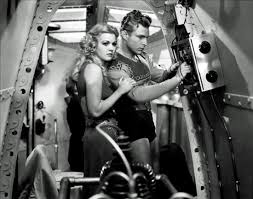
His first two series, Interstellar Patrol and Captain Future are so reminiscent of the old 1930s movie serials that I actually gave in and read the while listening to a playlist inspired by the original Flash Gordon soundtrack! However, you find yourself reading in black and white, with wobbly special effects, then out of the blue proper Science Fiction turns everything technicolor:
Snake-vines hanging from the tall trunks swayed blindly toward the quartet as they sped past. Sucker-flies swarmed around them, and deadly brain-ticks were visible on leaves. Somewhere off in the jungle, a siren-bird was charming its prey with weird song. Now and then a tree-octopus flitted hastily through the fronds above like a white ghost.
Or hits you with realistic non-humanoid aliens:
They were globes, globes of pink, unhealthy-looking flesh more than a yard in diameter, each upheld by six slender, insect like legs, not more than twelve inches long, and each possessing two similar short, thin limbs which served them as arms and which projected at opposite points from their pink, globular bodies. And between those arms, set directly in the side of the round body itself, were the only features—two round black eyes of large size, browless and pupilless, and a circle of pale skin which beat quickly in and out with their breathing.
Crashing Suns (Baen, not on Amazon btw).
It’s as if Buster Crabbe and his cast-mates had wandered into a modern SF novel!
Post World War Two, Hamilton churns out novellas and short stories. Some of these, especially the Star Kings sequence belong to what one editor plausibly calls the “Two Thousand Centuries”, a well worked out chronology reminiscent of Robert E Howard’s Hyborian Age:
The Era of Interplanetary Exploration and Colonization – 1971-2011.
The Era of Interplanetary Frontiers – 2011-2247.
The Era of Interplanetary Secession – 2247-2621.
The Era of Interstellar Exploration – 2300-2621.
The Era of Interstellar Colonization – 2621-62,339.
The Era of the Federation and United Worlds – 62,339-129,999.
The Era of the Star Kings – 130,000-202,115.
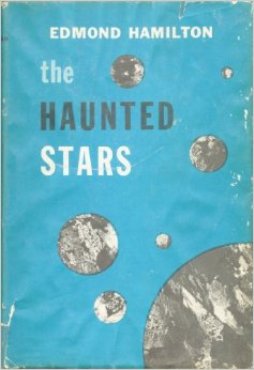
The feel is often Dune-meets-Star Wars, with princesses and emperors and super science. If these books didn’t influence Simon R Green’s (spectacularly everything but the kitchen sink with added debauchery) Deathstalker, then they should have done!
This is the point where his career overlaps with that of Arthur C Clarke, and our action heroes wander into more modern SFnal settings, such as in the Haunted Stars, where we discover our descent from a lost empire, and a Vorlon-like guardian race that forbids us Galactic empire. The theme plus the real-world political setting makes it sit well next to Rendezvous with Rama, Childhood’s End, and 2001.
Finally, in the late 60s, we come to Starwolf, three MilSF novels with a hint of Hammer’s Slammers. Apart from the usual problems with retro futures, these would pass muster today, so much so that Baen publishes them.
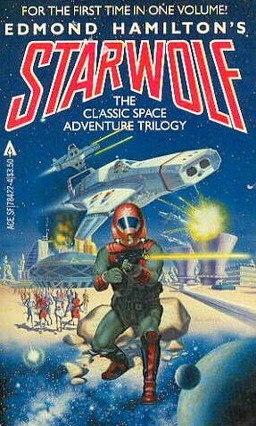
In case you hadn’t realised by now, if Hamilton didn’t invent all the tropes, he was an early adopter and enhancer of them, so much so that I strongly suspect he was Douglas — “never read beyond page 10” — Adams’s unacknowledged primer for the genre.
Hamilton’s career was also long. His first short story hit the pulps in 1928, when he was 24. His last novel went out in the late 1960s. He began as a good writer, with a clear prose style and little urge to ornament (though his Captain Future novels, being aimed at older kids, are an As You Know Bob-fest). His writing if anything became better as he aged — no going off the ball for this writer.
He was also — which is why I started reading him — married to Leigh Brackett. Though they were quite different writers, I think they shared some sensibilities;
The gusty red torchlight was almost lost in that vast, ruined gloom. But through the great rent in the ceiling, two ghost-like ocher moons now shed a faint low. By the uncertain light, Banning followed Sohmsei to the black stone seat. It was uncarved, stark – its very lack of ornament speaking a pride too great for show. Banning took his seat upon it, and a great whispering sigh went up from the Arraki.
M Harold Page (www.mharoldpage.com) is a full-time author. Buy his action-packed Dark Age adventure, Shieldwall: Barbarians! from Amazon. You can also learn how to plan and write your novels using his Storyteller Tools: Outline from vision to finished novel without losing the magic.
[…] by MHaroldPage [link] [1 […]
[…] (Jump to my last article on Hamilton and his work.) […]
Oooo – be careful Harold, or Doc Smith will descend from Valhalla and eviscerate you with one of his patented all-obliterating atomic rays! (You’re right – Hamilton was a better prose writer than Smith, but Lord, how I love the Lesman!)
I read the Lensmen in my early teens – bizarrely because they were in the reading list supplied by the unplayable Space Opera roleplaying game. Pretty mindblowing stuff. But yes, Hamilton was the better writer.